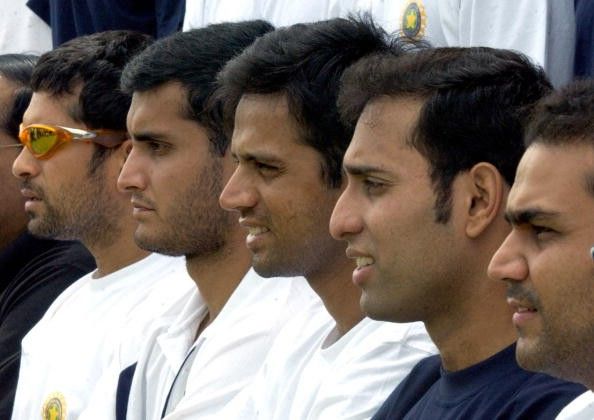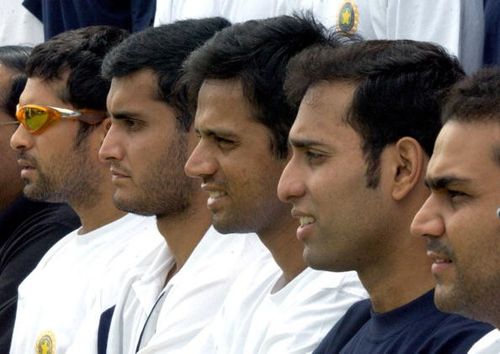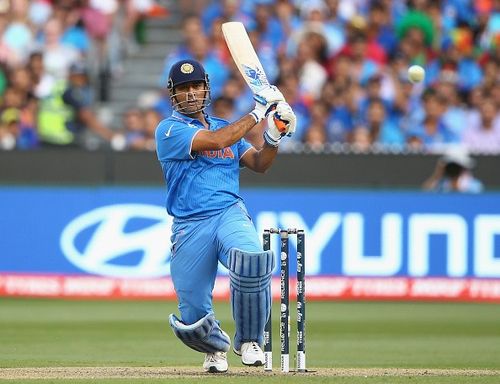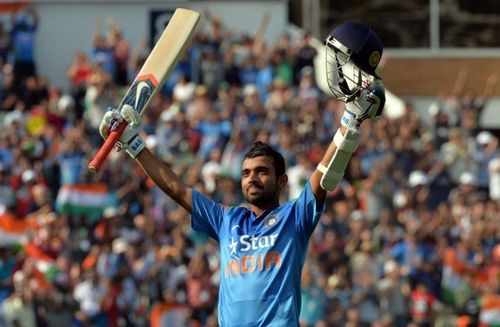
Why batting flexibility could be the answer to India's problems
There are two ways of playing cricket. The first is to intimidate your opponent with your muscle. They know what is coming and yet, it is tough to deal with it when it comes. The ‘Invincibles’ led by Clive Lloyd and Steve Waugh had that quality. The batting order was set in stone mostly, barring the odd injury.
You knew Adam Gilchrist and Matthew Hayden will come out to open. You knew Symonds will be there as the finisher. The opponents knew when Viv Richards will arrive and the new-ball bowlers dreaded the prospect of bowling to Gordon Greenidge and Desmond Haynes at the top. Yet, almost as surely as it seemed, the dread arrived.
The other way of playing cricket is guerrilla warfare. South African and New Zealand teams for a while employed it well. You don’t know who’ll arrive at what time. There are always surprise weapons. There are big hitters walking out of nowhere.
Modern day cricket is harsh. There are hundreds of cameras recording even your practice sessions. Your bowling plans are inspected threadbare using patterns, graphs and pitch maps. Your batting weaknesses are exploited with an accuracy that can find needles in haystacks. That means teams can only stay at the top if they have brain and brawn.
For a long time, India dominated the batting side of things in ODIs that were the envy of the world. So good has been India’s batting that it is the second most consistent ODI team in world cricket in the new millennium, with every trophy in their cabinet to boast about. However, with some fresh players coming in along with the old guard getting older or moving on, India’s batting needs flexibility now more than ever.
Dhoni’s desire
After pulling off an unbelievable win to level the series 1-1, MS Dhoni revealed quite a few of his plans for the opposition. It is no secret that Dhoni wants to play higher up the order. He wanted to enjoy his cricket and the adrenaline-driven realms of the finisher’s role will make your nerves fray and your hair grey. He had a genuine case too. Dhoni is still one of India’s top performers in ODI cricket, but the big shots aren’t coming at the rate at which they used to come.
- He has tons of experience now and can still score at a run a ball, control the game and beautifully lead the game from the middle. There is a powerful case for him to move to No.3 or No.4. His statistics at those two spots prove a point.
- Dhoni averages 82.75 with two centuries and six half-centuries at No.3 in just 16 innings while he averages 68.40 with a century and 10 half-centuries in 20 innings at No.4. In both positions, where batsmen are more likely to bat during non-powerplay overs, his strike-rate is above 99.
Dhoni’s problem
In the ideal world, Dhoni should have walked out at No.4 while Virat Kohli could continue to bat at his favourite No.3 position. However, that would leave No.5, No.6 and No.7 without too much reliability.
- For all his flair, Suresh Raina isn’t a giant in the lower middle order while India have Ambati Rayudu and Ajinkya Rahane as the other two options. For the No.7 spot, Dhoni pointed out lucidly that ‘it cannot be held by a bowler, it needs someone who can bat.’ He went on to dissect India’s biggest problem.
- We have just three options – Ravindra Jadeja, Stuart Binny and Axar Patel. Jadeja is out of favour and neither Patel nor Binny have showed great promise with the bat when the opportunities presented itself. Gurkeerat Singh is waiting in the wings as an unknown entity.
- Ajinkya Rahane is India’s latest problem. He is too good a batsman (and fielder) to be left out of the team, as he showed with two half-centuries in the first two ODIs against South Africa and those three fours in one over off Dale Steyn on either side of the wicket.
- Rayudu, to be fair to him, has never been allowed to settle in the team. He could have been a genuine solution to India’s problem fitting nicely at No.5, something Rahane cannot do. But while Rayudu has big shots, in a direct shoot-out, Rahane is always a better batsman than Rayudu is.
- The only option left then is to have Rahane at the top of the batting order and that means Dhoni has to continue to be selfless, the attribute that saw him go down the order as a finisher when he had all the numbers needed to stay at No.3 or No.4.
The numbers to be considered while deciding on the batting order
- Dhoni averages 56, 45 and 47 at positions 5, 6 and 7 respectively.
- Virat Kohli averages 50.22 and 58.13 at positions 3 and 4. So while many want Kohli to stay at his favoured No.3, he isn’t a bad bet at No.4. He played at the crucial No.4 during India’s victorious World Cup 2011 campaign. In 37 innings at No.4, Kohli has a whopping 7 centuries and 8 half-centuries, which are hardly numbers one needs to whine about.
- Kohli at No.4 allows Ajinkya Rahane to bat at No.3, a position he is technically best suited to. In his brief career, Rahane has averaged 35 at No.4 in 16 innings, only bettering that while opening with an average of 41.50.
- While Suresh Raina’s best averages of 45 and 36 are at No.4 and No.5, he has shown increased vulnerability to genuine pace, something that makes him a better bet at No.6 where he needs to throw his bat more often than build an innings.
How can flexibility be attained?
Anil Kumble suggested that his preferred batting order would be Kohli and Dhoni followed by Rahane and then Raina. That was based on his confidence that Rahane would do better when he has a limited choice and hence, can bat free with a clear mind. That also allows for a direct competition between Rayudu and Rahane. But for now, Dhoni doesn’t have an inclination towards that idea.
The alternative is the current order where Rahane walks ahead of Kohli and Dhoni walks in at No.5. India, for now, have a settled opening pair. Rohit Sharma has been India’s best ODI batsman in the last 18 months and Shikhar Dhawan hasn’t done too poorly. But, with Rahane gaining experience at No.3, India will always have the extra option for opening especially if Dhawan’s lean run (hasn’t been long, mind you) continues.
The best thing about this batting order is that it is reliable if not explosive with Rahane coming in at No 3 allowing Dhoni to go with five specialist bowlers and the second ODI showed how five specialist bowlers can win you more games. India will also have the option of going with an extra batsman at No.7 when a couple of their batsmen are in bad form, allowing Raina, Rohit and Kohli to share the fifth bowler’s quota – risky, but an option.
India needs to be flexible with their batting order as well. After a good start, they shouldn’t shirk from moving batsmen up and down. It makes more sense to have Kohli or Dhoni to walk in if the opening wicket falls after the first 15 or 20 overs.
- Raina should be promoted up the order to No.4 or No.5 on days when the team has had a good start and wants to keep the right-left combination going. India still has one glaring issue – the lack of the ‘big hitter’. It might make sense to take a look at Deepak Hooda who can hit the ball far and can bowl economically, especially on turning tracks.
Conclusion
Dhoni has almost thrown a challenge to the South African team by revealing his batting order plans. He has clearly mentioned that Ajinkya Rahane and Virat Kohli have to man the upper tier of the middle order while he and Raina would take care of the lower tier. Kohli’s mental comfort with No.4 is still important to cater to, considering he has been India’s best batsman over a three-year period and is critical in run-chases.
India should be open about moving him back to No.3 to help him regain form, especially if Rahane continues his current form of scoring runs and that too, at a good pace. Knowing Dhoni, he doesn’t like experimenting with the batting order on match day, but given India’s No.7 and big hitting worries, he might need to turn a new leaf with batting strategies.


